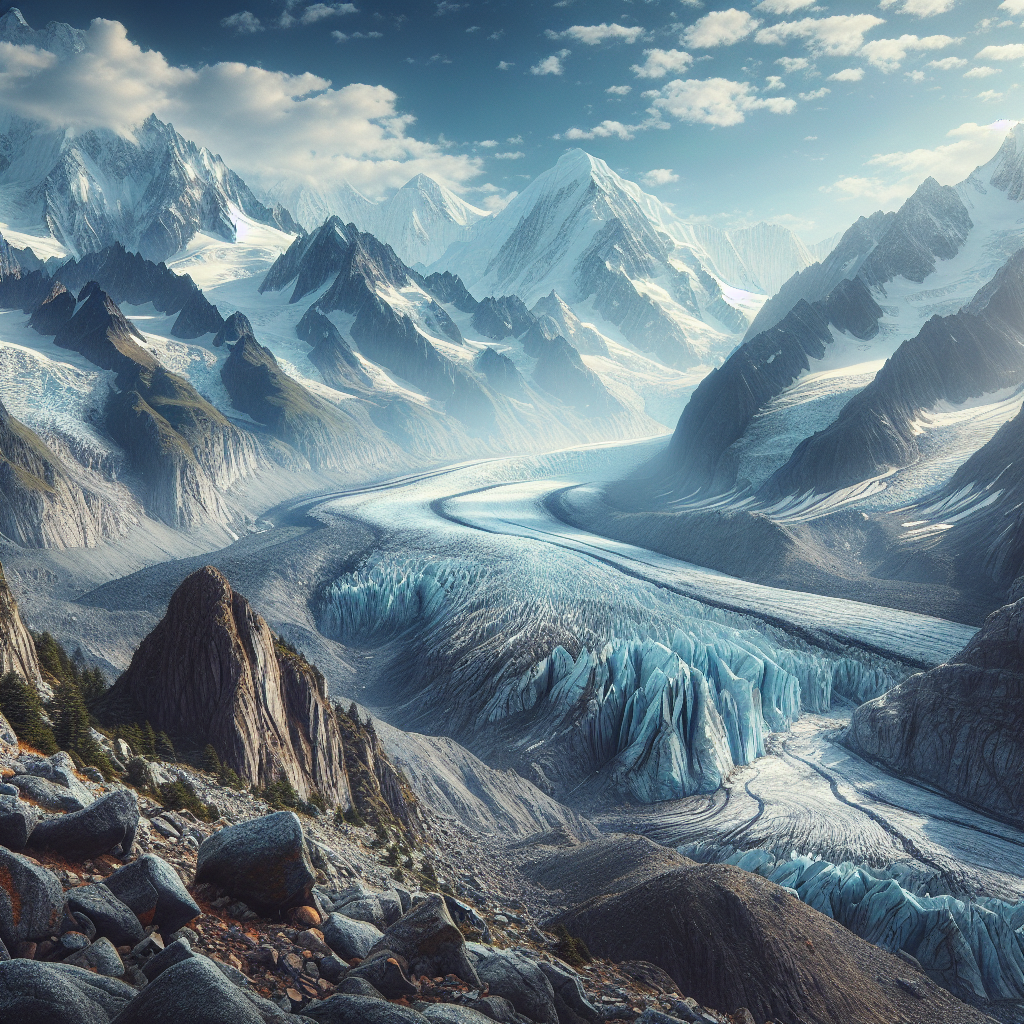Trekking through the wilderness of the Caucasus, you'll find the mighty Tsaneri Glacier, a colossal chunk of moving ice nestled in the Svaneti region of Georgia. This glacier is a beguiling force of nature—envision a river that's been frozen in time yet never stops its glacial crawl down the landscape. Formed eons ago, Tsaneri has witnessed the rise and fall of civilizations and serves as a silent observer to the whims of nature and man alike. As climate change now grips the globe, this frozen giant finds itself at the center of scientific studies and debates about our environmental policies and the future we are forging.
The journey to Tsaneri is an adventure in itself. Imagine trekking through dense forests and highlands that have been largely untouched by modern development. This stunning backdrop has been embraced by ecologists, photographers, and thrill-seekers from all over the world. Wrapped in mystique, the glacier is a stark reminder of Earth's natural wonders, celestial both in magnitude and in its penchant for mystery. Yet, it basks in paradox—as a focal point, it is both accessible to intrepid travelers and elusively remote.
Once you arrive at Tsaneri, you're struck by the sheer scale of it all. The ice flows are in constant flux, groaning and cracking under their own weight, evolving with time but leaving imprints that feel timeless. This dynamic change is beautiful, yet there's a certain melancholy in its inevitable retreat—a nod to climate change’s relentless rhythm.
Scientists from across the globe converge here for a closer look at the ice, understanding it as more than just frozen water. It's a natural archive of history, a time capsule recording atmospheric conditions for thousands of years. In its ice cores lie clues about times long gone, about how our planet’s climate has evolved, and what that means for us today.
However, these observations often don't make it to mainstream discourse because they might just make everyday life a little more uncomfortable. When you witness such beauty teetering on the brink of catastrophe, the impact is profound and immediate. It begs the question—shouldn't safeguarding such natural wonders take precedence over unchecked industrial growth?
Some argue this focus on preservation limits economic expansion, particularly in developing regions like Svaneti that rely heavily on tourism. Yet, the fragility of such ecosystems underlines the need for sustainable tourism, finding balance where progress does not come at the expense of nature. Renewable energy initiatives and responsible development can provide a path forward, ensuring that future generations inherit these stunning landscapes rather than their memory etched in a textbook.
But this isn't simply a confrontation between development and conservation. Many locals see Tsaneri and the surrounding area as integral to their cultural identity, intertwined with stories passed down through generations. Tsaneri is more than geography—it's heritage and history wrapped in a striking icy cloak.
As you stand before Tsaneri, it's not hard to grasp what's at stake. The glacier is a poignant testament to nature’s grandeur, a testament to how small human actions can ripple across time and space. For those who come face-to-face with it, the encounter is transformative. You're caught in a moment that extends beyond the here and now—a call to action and a beacon of knowledge.
Observing the glacier retreat, advocates for the environment see more than ice melting—they see the fallout from years of ignoring environmental impact, of viewing nature through an exploitative lens. It prompts reflection on our collective responsibility. The glacier gives voice to the pressing need for global policy shifts and creates space for dialogue where ideals meet reality.
Gen Z, with its finger on the pulse of social media and digital activism, has a unique power here. With posts and shares, you can spread awareness and spark global conversation about Tsaneri and glaciers around the world experiencing similar fates. Just imagine turning a casual scroll through Instagram into an educational journey that leads to action.
At the end of the day, the fate of Tsaneri Glacier isn't just a footnote in a scientific journal. It's a microcosm of our relationship with nature—a mirror held up to humanity reflecting looks of awe, wonder, and apprehension. Engaging with it asks us which stories we want to tell our children: ones of loss or ones of a world that cared enough to change.
In the middle of this frozen wilderness, where ancient ice tells tales even older than human memory, perhaps we can finally carve a new path—one that respects both the environment we inherited and the future we dream to build.

